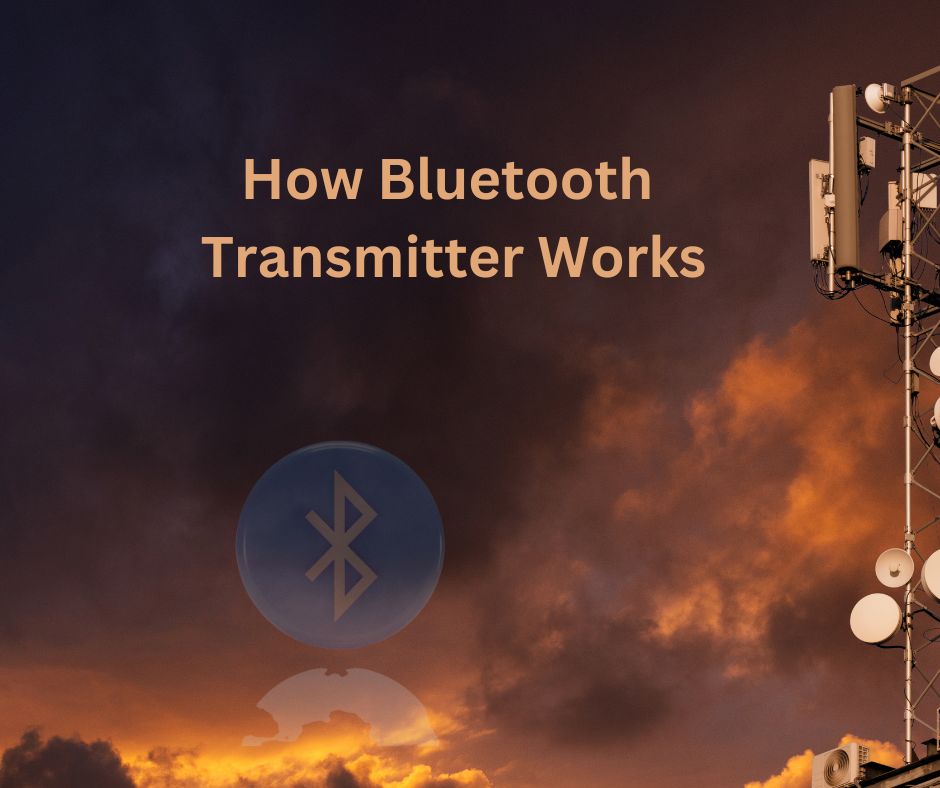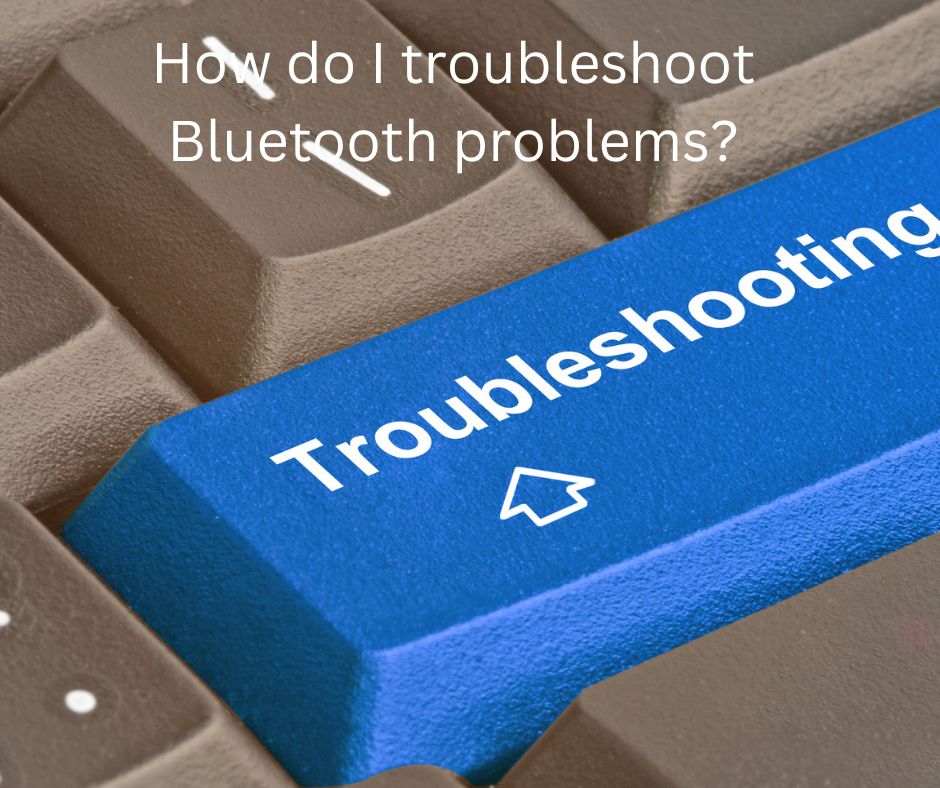How Bluetooth Transmitter Works
A Comprehensive Guide

Introduction
Bluetooth age has modified how we connect to and interact with our devices. Bluetooth has emerged as an essential part of regular lifestyles, from Wi-Fi earphones to smartwatches. We can also observe how a Bluetooth transmitter abilities, the way it promotes simple connections, and the historical context of its magic in this in-intensity put up.
How Bluetooth Transmitter Works
Bluetooth transmitters are tiny electronic devices that allow wireless communication between different devices within a short range. They use radio waves to transmit data between a sender (transmitter) and a receiver. Let’s delve into the nitty-gritty of how Bluetooth transmitters work:
1. Bluetooth Frequency Hopping
The 2.4 GHz ISM (Industrial, Scientific, and Medical) band is where Bluetooth transmitters operate. The transmitter quickly alternates between the 79 channels that make up this frequency band in a process known as frequency hopping. Bluetooth devices maintain a steady and dependable connection by hopping between channels to avoid interference from other devices utilizing the same frequency.
2. Pairing Process
To join, Bluetooth gadgets want to first pair with each other. During pairing, the devices install a constant connection and trade protection keys. By proscribing tool verbal exchange to legal events, this technique increases the security of the relationship.
3. Master-Slave Architecture
In a Bluetooth connection, one device acts as the master, while the other is the slave. The controller device initiates and controls the communication, while the agent device listens for commands and responds accordingly. This architecture allows efficient data transfer and helps conserve power on both devices.
4. Data Transmission
Once the pairing is complete, data transmission can begin. The controller device breaks down the data into packets and sends them to the agent device over the selected channel. The agent device receives and reassembles the packets to reconstruct the original data.
5. Adaptive Frequency Hopping (AFH)
Adaptive frequency Hopping (AFH) is a technique used by Bluetooth transmitters to improve performance even more. By dynamically choosing the channels with minor interference, AFH lessens the possibility of signal degradation or data loss. Due to this characteristic, Bluetooth can maintain a solid connection even in congested wireless environments.
Applications of Bluetooth Transmitters
Bluetooth technology is used in many different products and sectors. Here are a few typical applications for Bluetooth transmitters.:
1. Wireless Audio Streaming
One of the most popular makes use of Bluetooth transmitters is Wi-Fi audio streaming. Bluetooth-enabled headphones, audio machines, and earbuds permit clients to enjoy the track and call without the hassle of tangled wires.
2. IoT Devices
With the assistance of Bluetooth technology, the Internet of Things (IoT) has experienced rapid expansion. Smart locks, thermostats, and other home appliances communicate via Bluetooth with smartphones and other controllers.
3. Hands-Free Calling
Hands-free calling while driving is made possible with Bluetooth-enabled car kits and headsets, enabling safer communication on the road.
4. Wearable Devices
To offer real-time updates and decorate consumer reviews, fitness trackers, smartwatches, and other wearable devices use Bluetooth to synchronize information with smartphones and other gadgets.
5. Gaming Controllers
Gamers may wirelessly link their controllers to gaming consoles and computers using Bluetooth, giving them more flexibility and mobility while playing.
Advantages of Bluetooth Transmitters
Many benefits of the Bluetooth era make it a popular choice for Wi-Fi verbal exchange:
1. Low Power Consumption
Since Bluetooth transmitters are made to be energy-efficient, battery-powered gadgets are the perfect applications for them because devices can run longer on a single charge due to the technology’s low power consumption.
2. Universal Compatibility
Bluetooth is a standardized technology adopted by most device manufacturers. No matter the brand, Bluetooth-enabled devices can connect and communicate with one another without issue because of this ubiquitous interoperability.
3. Easy Setup and Use
Pairing Bluetooth devices is a straightforward process that requires minimal technical expertise. Users can quickly establish connections and begin using their devices.
4. Short-Range Communication
Bluetooth’s short-variety verbal exchange limits the hazard of unauthorized get admission to or interference from distant devices, enhancing safety and privacy.
5. Cost-Effective Solution
Bluetooth era is easy for producers to implement, making it a price-powerful desire for Wi-Fi capability in gadgets.
Limitations of Bluetooth Transmitters
While Bluetooth technology offers numerous benefits, it also has some limitations:
1. Limited Range
Bluetooth’s short-range communication, typically around 10 meters, can be a limitation in scenarios where devices must be far apart.
2. Interference
Since Bluetooth operates in the crowded 2.4 GHz band, it may face interference from other devices using the same frequency range, potentially affecting signal quality.
3. Data Transfer Speed
Compared to different wireless technology, along with Wi-Fi, Bluetooth’s information switch pace is highly slower, making it less suitable for massive document transfers.
4. Device Compatibility
While Bluetooth is universally compatible, older devices may not support the latest versions of Bluetooth technology, leading to connectivity issues.
5. Security Concerns
Although pairing provides some level of security, Bluetooth connections may still be vulnerable to hacking attempts if proper security measures are not in place.
Frequently Asked Questions (FAQs)
1. How far can a Bluetooth transmitter reach?
Bluetooth transmitters typically range about 10 meters (30 feet). However, the actual range may vary depending on the specific devices and the environment in which they are used.
2. Can I connect multiple devices to a Bluetooth transmitter simultaneously?
Yes, Bluetooth transmitters can connect to multiple devices at once using a technology called Bluetooth multipoint. However, the number of simultaneous connections may vary depending on the transmitter’s capabilities.
3. Is Bluetooth safe for health?
Bluetooth technology operates within established safety guidelines and emits low-power radio waves, generally considered safe for human health.
4. Can I use Bluetooth in an area with many Wi-Fi networks?
Bluetooth and Wi-Fi operate in the same 2.4 GHz frequency band, which can lead to interference. However, Bluetooth uses frequency and adaptive Frequency hopping techniques to minimize interference and ensure reliable communication.
5. How can I improve Bluetooth connection quality?
To improve Bluetooth connection quality, ensure no obstructions or interference sources between the connected devices. Additionally, keeping the devices within the recommended range can enhance connection stability.
6. Can I use Bluetooth to transfer large files?
While Bluetooth is suitable for smaller file transfers, it may not be the most efficient option for large file transfers due to its slower data transfer speed. Using Wi-Fi or other high-speed data transfer methods may be more appropriate in such cases.
Conclusion
Bluetooth transmitters have appreciably simplified how we connect and speak with our devices. By employing frequency hopping, pairing methods, and adaptive frequency hopping, Bluetooth technology allows seamless Wi-Fi communiqué. In the world nowadays generations, it is an important issue due to its large bundles and numerous advantages.
As generation continues to comply, Bluetooth is probable to improve, addressing its present-day limitations and beginning new wireless connectivity possibilities. So, the following time you operate your Wi-Fi headphones or sync your fitness tracker, recall the magic behind the scenes, courtesy of the Bluetooth transmitter.



Pingback: Ultimate Bluetooth Transmitter for Gaming